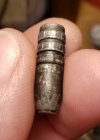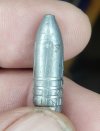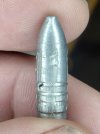You are using an out of date browser. It may not display this or other websites correctly.
You should upgrade or use an alternative browser.
You should upgrade or use an alternative browser.
Fit is King - A Practical Journey
- Thread starter Dimner
- Start date
waco
Springfield, Oregon
Yep.my head hurts i will go back to my garage and have a beer
Attachments
todd
Well-Known Member
/
i quit drinkin (and smokin) 10 or so years ago, is it alright if i have a cup of coffee, black, 1/2tsp of erythritol (sugar like, 0 cal.) ?
my head hurts i will go back to my garage and have a beer
i quit drinkin (and smokin) 10 or so years ago, is it alright if i have a cup of coffee, black, 1/2tsp of erythritol (sugar like, 0 cal.) ?
Ian
Notorious member
Some of us have taken graduate studies in Fiverese. IF you already have a good idea what he's talking about, it's like "YEAH, now how come I can't distill all that to a couple of short sentences?" If you don't, it might as well be Swahili. I used to spend hours on the other site trolling older posts for nuggets of wisdom from him and Felix, both of them would drop a little line in the middle of a thread that held the secrets of the universe and usually no one picked up on it. After a while I began to focus on what they were saying in the context of the thread and sort of work backwards to fill in the blanks. Felix would say "try this....." and I'd think real hard about what was to be learned, then go actually try it, and boy did I get my eyes opened.
The people who really knew their stuff virtually never wrote about it in technical detail that a novice could understand and duplicate. Those that write a lot usually know very little. I've been trying to change that for over a decade as I continue to figure things out myself.
The people who really knew their stuff virtually never wrote about it in technical detail that a novice could understand and duplicate. Those that write a lot usually know very little. I've been trying to change that for over a decade as I continue to figure things out myself.
Ian
Notorious member
Ok Dimner, let's update your posts again.
"Broadly, fit is the relationship of measurements between the bullet itself and anything that touches or will touch it inside of the gun, with the emphasis being on tolerance reduction and exact replication. Regardless of the many methods by which the bullet can be fit to the gun, the end goal of any specific mechanical fit technique is starting the bullet absolutely straight into the barrel so that it flies true when it comes out of the muzzle. Bullet fit can be broken down into two categories: Static Fit which is how the bullet shape relates to the firearm at the moment it is about to be fired, and Dynamic Fit which is the moving relationship between the contacting surfaces of the bullet and the inside of the barrel, from chamber to muzzle."
Dynamic fit is the moving relationship between the contacting surfaces of the bullet and the inside of the barrel. It ceases to matter once the bullet has departed the muzzle.Dynamic Fit - the condition (does the term fit really apply here?) of the bullet anytime after the primer is lit. Regardless of if the bullet is inside or outside of the barrel.
Try this:And when I say let's, what I really mean is for the love of god, someone with better writing skills can I please look at your paper? Teacher isn't looking. Just this once? Please? Yeah, just that first paragraph that explains Fit is King briefly. Yeah the one that uses all them smarty word things
Draft Definition - Commonly refers to the static fit of a bullet. The fit of the bullet anytime and upto the moment before the primer is lit. A bullet is considered to have a good fit when, under specific conditions, the bullet and firearm work together to achieve optimal results in a repeatable manner. The desired results are up to the user to determine, just as the method of achieving a good fit is upto the user.
"Broadly, fit is the relationship of measurements between the bullet itself and anything that touches or will touch it inside of the gun, with the emphasis being on tolerance reduction and exact replication. Regardless of the many methods by which the bullet can be fit to the gun, the end goal of any specific mechanical fit technique is starting the bullet absolutely straight into the barrel so that it flies true when it comes out of the muzzle. Bullet fit can be broken down into two categories: Static Fit which is how the bullet shape relates to the firearm at the moment it is about to be fired, and Dynamic Fit which is the moving relationship between the contacting surfaces of the bullet and the inside of the barrel, from chamber to muzzle."
fiver
Well-Known Member
now we are doing the let's just cram the biggest thing we can get to fit in there... thing again.
NO.
that's not firment, fitment ,,, whatever.
it's a good way to insure the barrel gets plugged up so no gas blows past the lead going down it.
that's it... period.
it is not a proper fitment.
look,,, we are doing everything we can to get the bullet from the mold to the target without damaging it.
that includes sizing, coating, and loading it.
if we start thinking about how to do this with a bit more care and focus, all the way from the pot on down the results on paper will improve.
but you have to look backwards at your process as well as forward, and see how the step before is affecting the step your working on now.
you are your own customer.
NO.
that's not firment, fitment ,,, whatever.
it's a good way to insure the barrel gets plugged up so no gas blows past the lead going down it.
that's it... period.
it is not a proper fitment.
look,,, we are doing everything we can to get the bullet from the mold to the target without damaging it.
that includes sizing, coating, and loading it.
if we start thinking about how to do this with a bit more care and focus, all the way from the pot on down the results on paper will improve.
but you have to look backwards at your process as well as forward, and see how the step before is affecting the step your working on now.
you are your own customer.
Ian
Notorious member
now we are doing the let's just cram the biggest thing we can get to fit in there... thing again.
Where'd you get that? That's not it at all, at least not unless you're specifically speaking of the morse taper fit thing.
When I wrote "exact replication", did you think I meant matching every angle and dimension exactly with the bullet? Nooooo, what I meant by that was "doing it the same way every time". Maybe another edit is in order.
fiver
Well-Known Member
back to fitment.
and a thought/story/side story.
when Michael was developing the Ranch Dog molds for the marlins he was fully concentrating on the nose section to fill that void they have right in front of the chamber.
i was messing around with my 375 Marlin at the time and we exchanged a few thoughts back and forth.
i was kind of pulling my hair out and trying all sorts of tricks including using extra long 38-55 cases.
anyway we got to talking about their throat and beyond shape and he was focused just on overcoming that gap.
the whole thing boiled down to the nose shape hanging out past that.
so what happens is you take the 30 cal design and since the nose is figured for you the trick is the next step.
impressing that rounded rifling into the side of the bullet.
[not the same as taking up lands and grooves]
he didn't really think about that, and was forced to go with the LEE T/L grooves since they were cutting the molds for him.
the byproduct of the whole thing is you then end up using a 311 diameter bullet in your 30-30 and consequently also using a some harder alloy just to hang onto that rifling.
is that proper fitment?
well in this case your using a 'system' to get the best results from that rifle.
part of the problem here is your actually messing up part of that bullet on purpose to get the best fitment.
and a thought/story/side story.
when Michael was developing the Ranch Dog molds for the marlins he was fully concentrating on the nose section to fill that void they have right in front of the chamber.
i was messing around with my 375 Marlin at the time and we exchanged a few thoughts back and forth.
i was kind of pulling my hair out and trying all sorts of tricks including using extra long 38-55 cases.
anyway we got to talking about their throat and beyond shape and he was focused just on overcoming that gap.
the whole thing boiled down to the nose shape hanging out past that.
so what happens is you take the 30 cal design and since the nose is figured for you the trick is the next step.
impressing that rounded rifling into the side of the bullet.
[not the same as taking up lands and grooves]
he didn't really think about that, and was forced to go with the LEE T/L grooves since they were cutting the molds for him.
the byproduct of the whole thing is you then end up using a 311 diameter bullet in your 30-30 and consequently also using a some harder alloy just to hang onto that rifling.
is that proper fitment?
well in this case your using a 'system' to get the best results from that rifle.
part of the problem here is your actually messing up part of that bullet on purpose to get the best fitment.
Ian
Notorious member
Here's another way to make a Marlin with the cathedral throat work and it will blow most people's minds: forget the nose and steer the bullet from the back end, that's what that long neck and small chamber neck clearance is for.
Here's a captured bullet that routinely and on demand groups sub-moa at 100 yards at a moderate 1850 fps (my universal fits all .30-30 load and bullet).

Notice there isn't a hint of land marks on the nose, and barely any on the .305" front band. So loaded, these cartridges chamber easily and fire in brand-new, SAAMI-spec throatless chambers. The trick is to make them .3115" so they fit snug in the chamber neck and breech-seat them with the primer buffered with the powder charge.
Here's a captured bullet that routinely and on demand groups sub-moa at 100 yards at a moderate 1850 fps (my universal fits all .30-30 load and bullet).

Notice there isn't a hint of land marks on the nose, and barely any on the .305" front band. So loaded, these cartridges chamber easily and fire in brand-new, SAAMI-spec throatless chambers. The trick is to make them .3115" so they fit snug in the chamber neck and breech-seat them with the primer buffered with the powder charge.
Ian
Notorious member
Now here's one that does NOT work in the throatless .30-30 which has no taper from neck to top of the lands, but the bullet nose has a 3⁰ included angle, straight taper nose which allows the bullet to "gimble" in the chamfer at the end if the chamber and get crooked every time The alloy was also meant for 2500 fps and not 1800, so the engraving pressure is very high and the base gets flame cut.
They don't group all that great in this rifle, as you would guess, but I know a couple of guys who have put this same bullet from the same casting lot and with the same lube through standard 308 barrels and done basically MOA for as far and fast as they cared to shoot them. The difference of course being the throat shape and velocity.


They don't group all that great in this rifle, as you would guess, but I know a couple of guys who have put this same bullet from the same casting lot and with the same lube through standard 308 barrels and done basically MOA for as far and fast as they cared to shoot them. The difference of course being the throat shape and velocity.


Bret4207
At the casting bench in the sky. RIP Bret.
Oh boy! More "lightbulb" moments!
I have in the past gone for the "larger is almost always better" theory, and as I said, there are limits to that. I've often told people trying to figure out sizing diameters that the ID of a fired case mouth is as large as you can easily go. I see now that while that's true, I could have been giving the wrong advice, or at least not the whole story with the advice. Lesson learned, fine tune things.
Ian, "steering from the back end". 10-4. Isn't that what minimum run out of the loaded cartridge contributes to? Minimum neck clearance, no run out, no bent, long for the caliber bullets? Good points, we forget the body is just as much in play as the nose.
From post 35- "The alloy was also meant for 2500 fps and not 1800, so the engraving pressure is very high and the base gets flame cut." Fuel for the "Bhn isn't the whole story" saga! Also some very nice pics of the alloy being moved into the grooves, an important issue that doesn't get a lot of attention. Good job!
Post 34 makes me glad my 336SC 35 Rem is pre MG!
I have in the past gone for the "larger is almost always better" theory, and as I said, there are limits to that. I've often told people trying to figure out sizing diameters that the ID of a fired case mouth is as large as you can easily go. I see now that while that's true, I could have been giving the wrong advice, or at least not the whole story with the advice. Lesson learned, fine tune things.
Ian, "steering from the back end". 10-4. Isn't that what minimum run out of the loaded cartridge contributes to? Minimum neck clearance, no run out, no bent, long for the caliber bullets? Good points, we forget the body is just as much in play as the nose.
From post 35- "The alloy was also meant for 2500 fps and not 1800, so the engraving pressure is very high and the base gets flame cut." Fuel for the "Bhn isn't the whole story" saga! Also some very nice pics of the alloy being moved into the grooves, an important issue that doesn't get a lot of attention. Good job!
Post 34 makes me glad my 336SC 35 Rem is pre MG!
Last edited:
Dimner
Named Man
Hey guys, I'm still around. Sorry I have not been a part of the conversation. Wife had a back procedure yesterday, which for some dumb reason, I though would give me alot of down time to work on the thread. Man, was I wrong!
I'll get the updates rolling this afternoon or tormoow.
I'll get the updates rolling this afternoon or tormoow.
Bret4207
At the casting bench in the sky. RIP Bret.
Best wishes to the Mrs for a speedy recovery!Hey guys, I'm still around. Sorry I have not been a part of the conversation. Wife had a back procedure yesterday, which for some dumb reason, I though would give me alot of down time to work on the thread. Man, was I wrong!
I'll get the updates rolling this afternoon or tormoow.

